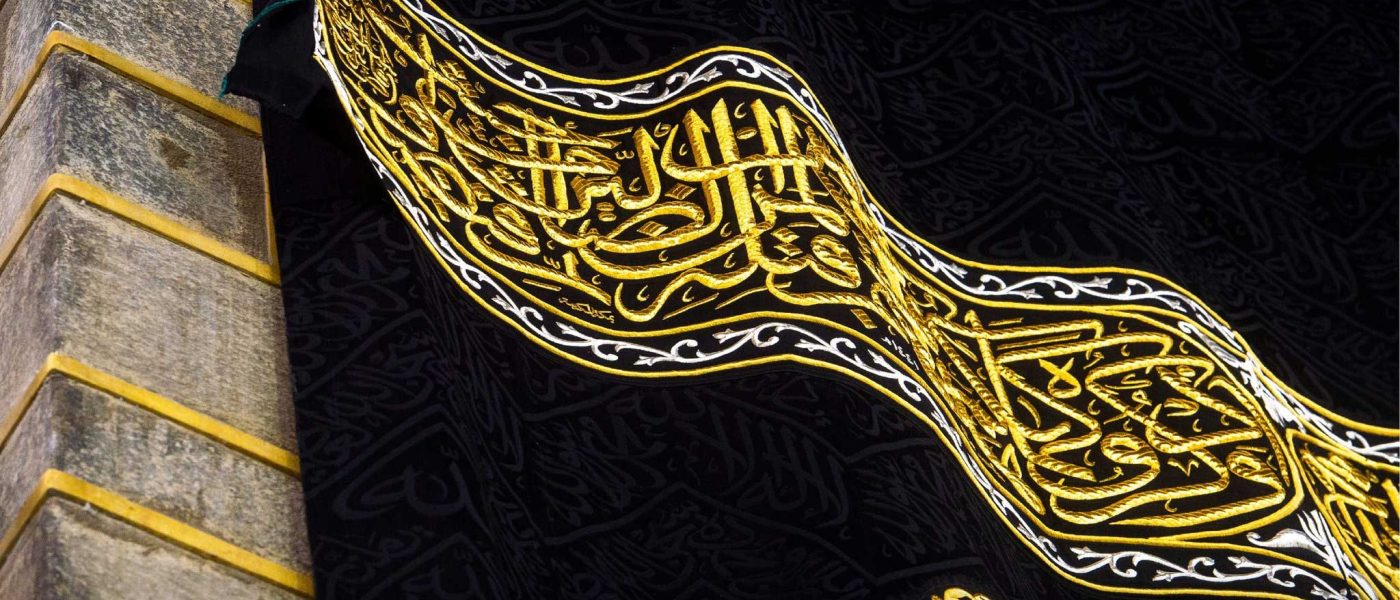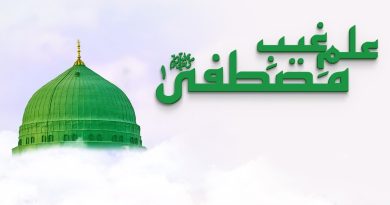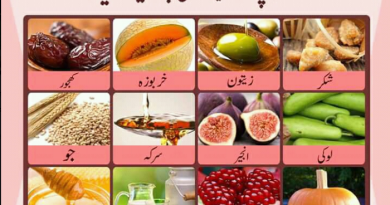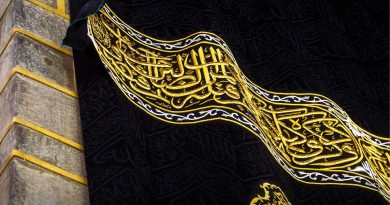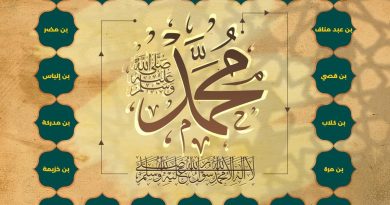Ghilaf-e-Ka‘bah
Ghilaf-e-Ka‘bah: The Sacred Covering of the Ka‘bah
What is “Ghilaf-e-Ka‘bah”?
-
The term Ghilaf-e-Ka‘bah (غِلافِ کعبہ) literally means “the covering of the Ka‘bah”, derived from Arabic ghilāf (cover, envelope) and Ka‘bah.
-
It refers to the luxurious cloth (also called Kiswa) that is draped over the Ka‘bah in Masjid al-Haram, Makkah.
-
This cloth is replaced annually during the Hajj season.
History and Tradition
-
The tradition of covering the Ka‘bah goes back many centuries. Islamic historical sources say that the first covering was placed by Prophet Ismail (AS).
-
Over time, the style, materials, and craftsmanship of the Ghilaf have evolved, reflecting changes in artistic, cultural, and technological capabilities.
-
The current Ghilaf is made of high-quality silk, richly embroidered with Qur’anic verses in gold and silver thread.
Physical & Craftsmanship Details
-
The cloth is mainly black, with flowing gold embroidery of verses from the Qur’an. The contrast of black and gold is not only beautiful but symbolic (reflecting humility, majesty, and the Word of Allah).
-
It is made of several panels: four for the walls of the Ka‘bah and one for the door curtain (i.e. the Bab al-Ka‘bah) which is special and decorated elaborately.
-
A huge amount of material and effort go into its making: e.g. hundreds of kilograms of silk, and pure gold or silver for the embroidery.
Spiritual & Symbolic Significance
-
The Ghilaf is more than mere decoration; it is a sign of respect, reverence, and sanctity. Draping the Ka‘bah with this cloth is an act of honoring the House of Allah.
-
The verses embroidered on it constantly remind worshippers of the Qur’an and the teachings of Islam. When pilgrims circumambulate (Tawaf) the Ka‘bah, they see it, touch it, sometimes kiss or pray near parts of it, all of which deepen their spiritual experience.
-
The annual replacement of the Ghilaf near the Day of Arafat during the Hajj is also a potent reminder of renewal — of devotion, purification, and continuity of tradition.
Modern Relevance and Reverence
-
Each year, the Saudi authorities supervise the production and installation of a new Ghilaf. It becomes a focal point of the Hajj rituals and of admiration from Muslims worldwide.
-
Pieces of older Ghilafs are sometimes distributed as gifts or kept in museums, or shown in exhibitions (for example, “Saudi embassy holds spectacular display of Ghilaf-e-Ka‘bah”) so people can see this magnificent artwork up close.
Common Questions
| Question | Answer |
|---|---|
| When is the Ghilaf replaced? | On the 9th day of Dhu al-Hijjah (Arafat day), during the Hajj period, the cover is changed. |
| Who materials it and where? | Skilled artisans produce it in workshops in Saudi Arabia, using top silk, gold, silver, and special thread for embroidery. |
| What is done with the old Ghilaf? | Parts may be cut and distributed to dignitaries, mosques, and individuals; it’s treated with respect. |
Why It Matters for Muslims Worldwide
-
The Ghilaf-e-Ka‘bah is a unifying symbol: regardless of background or nationality, Muslims share love and respect for the Ka‘bah, and by extension, its covering.
-
It links the past to the present: it connects today’s believers with centuries of tradition, devotion, and craftsmanship.
-
The reverence shown toward the Ghilaf reflects broader Islamic values: humility before Allah, respect for sacred things, attention to beauty in worship, and preservation of heritage.
Conclusion
The Ghilaf-e-Ka‘bah is much more than a beautiful cloth. It is a sacred symbol, beautifully blending art, faith, history, and devotion. It reminds Muslims of the grandeur of Allah, the centrality of the Ka‘bah in Muslim worship, and the continuity of Islam’s sacred traditions. Understanding its history and significance deepens both respect and love for this hallowed tradition.

